Are you starting out in the world of Fashion Photography? Getting your talented team together for the shoot does not have to “break your bank”!
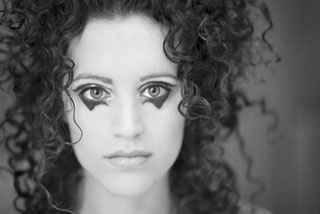
Copyright © Lindsay Adler
This image is an example of “staying close to home” for fashion subjects. This model is of one of my college roommates. I put the eyeliner under her eyes and we used bobbypins to put up her hair in a pleasing manner. I didn’t use an extensive creative team for this image–just the model and me. The cost to create the image was $0.
Technical: Canon 5D, 85mm Lens at f/1.8 at 1/125, ISO 500–window light.
High-end fashion advertising and editorial shoots are the results of many people collaborating to achieve a final product. In fact, more than a dozen people may be working on-site at a typical advertising shoot. You’ll find a model (or models), makeup artist and assistant, wardrobe stylist and assistant, and hair stylist and assistant.
Then you can count the photographer plus one or two assistants to handle lighting and equipment as well as a “digital tech” who handles the computer and digital files. Finally, if it’s an advertising shoot, one person, usually the art director, is usually there to represent the company sponsoring the advertisement. With such a crowd on scene, the photographer becomes much like an event coordinator in charge of executing a creative vision.
While a massive collaboration may be how the “high-end” world of fashion works, you don’t need such an extensive group of people to create a beautiful image. I have made many stunning images with just my camera and a model.
Permit me to share a few suggestions on how to find models and how to gather a creative team (for free!) to help improve the overall professionalism and creativity of your images.
Finding Models
The best way to find models when you begin fashion photography is to start close to home. It’s beneficial to initiate your search for models among your friends and family members. First of all, your being familiar with your models will help them be more comfortable.
This ease creates a calm and comfortable atmosphere that may be more conducive to creativity. Second, highly experienced models are not always necessary or even desirable. In fact, many great fashion photographers prefer to work with inexperienced models because they’re easier to “mold” and are eager to work hard for great images. If you have family members with college-aged friends, see if any of those friends are interested in modeling.
Many college students would like to try modeling simply to have great pictures of themselves for personal reasons or headshots for work–modeling and/or acting. Other places to ask around for models are dance studios and theater companies.
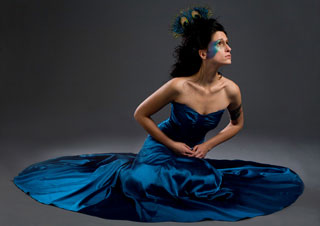
Copyright © Lindsay Adler
For this image, I posted an advertisement on <craigslist.com> for a model aged 18-30 who was interested in posing for a fashion shoot in exchange for portfolio images as compensation. Many models replied. I chose this model (Amanda) for my project and used her SEVERAL times afterward.
Her hair and makeup designs, although my concept, were executed by a young hair and makeup artist at a local salon (at a discounted price in exchange for portfolio prints). The cost of the image was about $35 (for supplies and the time of the hair/makeup artist). The dress was borrowed from my sister.
Technical: Canon 5D, 50mm Lens at f/11 at 1/100, ISO 100–studio, beauty dish, fill cards, rim light.
Another way to find models is to post advertisements for models on the Internet. This technique might sound odd at first, but it is common practice. (I’ve found several good models this way.) Various sites like <craigslist.com> and <gumtree.com> are great resources.
Simply post the ad, list what you’re looking for and the compensation you’re offering. (I’ll discuss compensation later). Just make sure you specify the type of modeling you need (i.e. fashion, beauty, nude, etc.), the approximate age range you’re looking for, and request full-length and close-up photos.
Another GREAT way to find models is to sign up with a fashion or model-networking site. These sites are places for photographers, makeup artists, models, and other creatives to meet with one another. Through these sites, you create a profile and seek out others with whom you’d like to work.
My favorite site is Model Mayhem. I’ve had a lot of luck finding great models, make up artists and stylists there. Another site is Model Run. There are dozens of similar sites, although the popularity of each will depend somewhat on the region where you live.
Once you have several good fashion photos in your portfolio, you can also contact your local model agencies. Agencies are always adding new models who are referred to as “new faces.” These models have limited experience and need to build their portfolio. Therefore, their agencies are happy to lend them for shoots in exchange for prints to add to their portfolios.
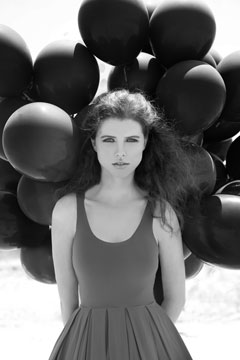
Copyright © Lindsay Adler
I found this model on <modelmayhem.com>. I was planning a visit to California, and through the website, contacted a model and a hair/makeup person to put together this shoot. The entire creative team worked in exchange for portfolio images. The only cost to me was $40 to rent the helium balloons for the day.
Technical: Canon 5D, 85mm Lens at f/3.5 at 1/320, ISO 100–natural light (sunlight bouncing off of sand)
The Creative Team
As I mentioned before, when you’re just starting off, you don’t need a large creative team. You can make use of the resources available to you. Eventually, however, through networking you’ll gather a small team to work with on fashion projects.
As before, classifieds sites like <craigslist> and networking sites like Model Mayhem can also be used to locate wardrobe stylists, makeup artists, hair stylists, and photographers. On the classified sites, you can post an ad describing what you need, and on the networking sites, you can search by region to find other creative people in your area.
When you need your subjects to have styled hair and makeup, you can try to find models who can do their own or who have friends who can help. You can do some online research to teach yourself basic makeup tricks to apply to your models (as I did in the beginning).
Furthermore, you can visit a local beauty salon to see if any employees are interested in working with you. Many young hair stylists and makeup artists hope to work in fashion someday and would be willing to work for free to build a portfolio. Some might also offer to work for a very small fee just to cover their kit (makeup kit) expenses.
In a fashion shoot, your ideal is to showcase great clothing. A stylist is the person in charge of the wardrobe. S/he gathers the necessary clothing and accessories before the actual shoot and often buys, rents, or uses items from his/her own collection.
Stylists work with the photographer to express a vision for the shoot, whether that involves clothes for a particular theme or simply fashions that compliment the model. During the shoot, they make sure the clothes look good (i.e. they hang on the model correctly, look good in the light, and fit well).
During the shoot, they’re ready with a change of clothes and accessories in case the photographer wants to vary the shot. Professional stylists have access to a wide range of designer clothing to which a photographer would not otherwise have access.
Although stylists are extremely helpful, they aren’t imperative for making great images or finding great clothes. You can also find great clothing at a number of other locations…for free. You can visit a local vintage shop and ask if you can borrow or rent clothing for a shoot.
You can also work with a local fashion boutique. If you’re allowed to borrow clothes, you might offer prints for the shop to use in advertising or for in-store promotions. Don’t forget; you can also ask your model if she has any clothing that would be appropriate for the shoot.
When you’re doing a shoot, it’s often helpful to have an assistant. Your choice can be anyone; photography experience isn’t necessary.
You may simply need someone to straighten the model’s clothing, hold a reflector, or move a light. If you’re just starting off, you can often find a friend or family member who would be willing to step in. You might even use a friend of the model to help.
I’ve had makeup artists who doubled as my assistants. People are usually more than willing to help in any way they can. Just make sure you ask if the additional job is okay with them before the shoot.
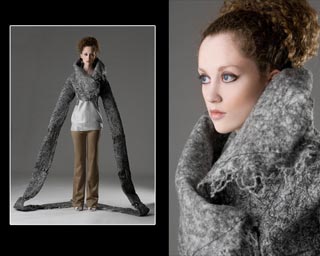
Copyright © Lindsay Adler
To achieve this image, I attended the final show of the fashion design students at the local university. I approached several students with my business card and an offer to shoot images for their fashion portfolios for free. In this case, the model was a friend of the designer, the clothing was created by the designer, and the makeup artist was hired by the designer (makeup artist used for runway shows, etc.).
The cost of this shoot was nothing. Note: when shooting TFP (test for prints/portfolio), you must make sure that everyone is benefitting. For this reason I always make sure to shoot additional images. I shoot close-up shots for the model and makeup artist as well as full-length ones for the clothing designer.
Technical: Canon 5D, 50mm & 85mm Lens at f/8 at 1/100, ISO 200–studio, beauty dish with softbox, rim light (back right 45 degrees).
Expectations
When you set up a fashion shoot or put ads online, you must establish your expectations and compensation for all involved. A common term used in the industry is TFP, “trade for prints/portfolio,” meaning that the person is willing to work in exchange for images to add to a portfolio.
This is a great way to build your own fashion work, and you’ll often find good people willing to work for free. More experienced models may require compensation, but I always find beautiful models just starting off who will work TFP. Hair stylists, makeup artists (referred to online as “MUAs”), and wardrobe stylists usually enter their field by working on TFP shoots, as well. If you’re working with people who are novices who live in the area, they usually don’t need any compensation. However, those outside of the area often request travel expenses or other small fees.
If you agree to work TFP, you have a responsibility to deliver a CD of images or prints to all parties involved within a reasonable amount of time (a couple of weeks). This is extremely important, since the images are everyone’s “payment” for the job.
I generally burn a CD of images–including full resolution jpegs of the images I retouched and smaller resolution images of the entire shoot. Most people prefer CDs to prints, because they can use the digital images online and print them in whatever sizes they need.
Another quick note: I also usually make a deal with the models about how many retouched images they will receive (usually two per outfit or scene—close up and full length) and will offer additional retouching for a fee. However, don’t feel obligated to retouch a large number of photos, and if you don’t know how to retouch, stay tuned to future articles for advice!
by Lindsay Adler

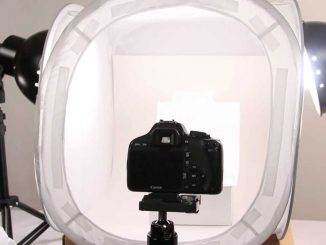
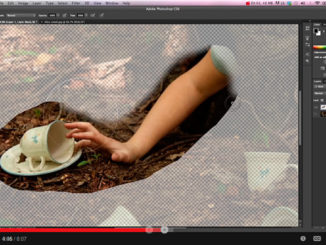

Leave a Reply